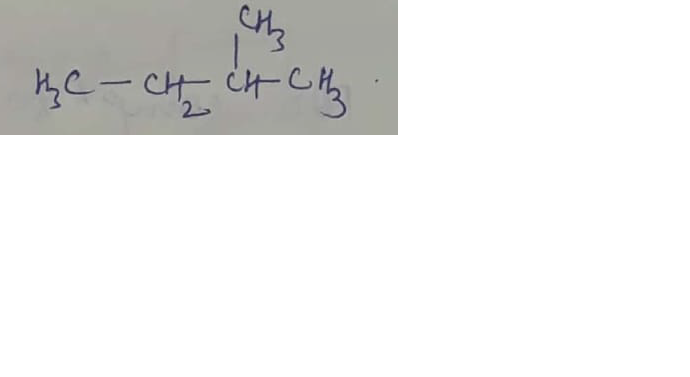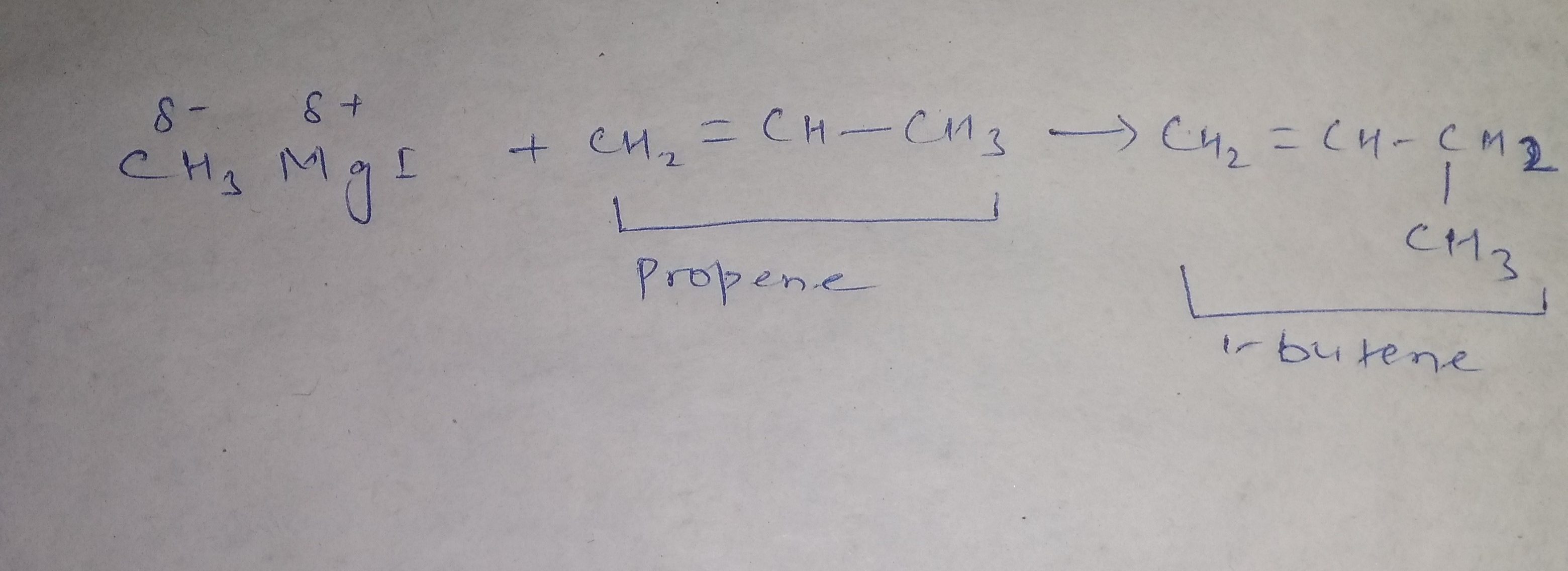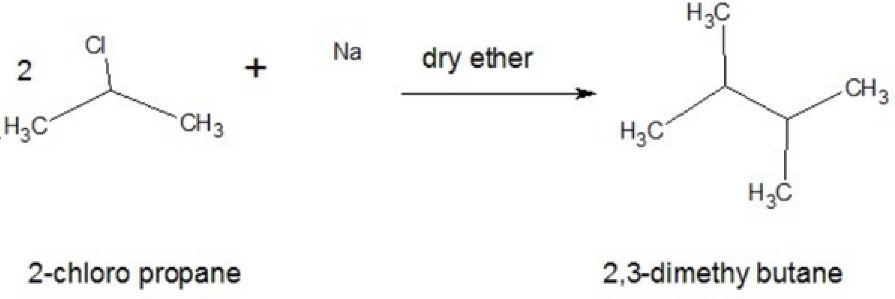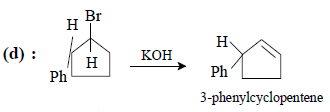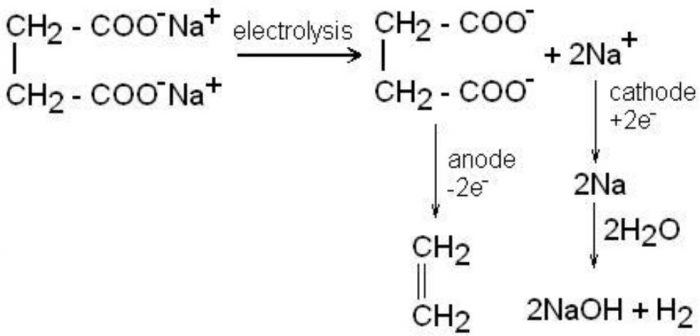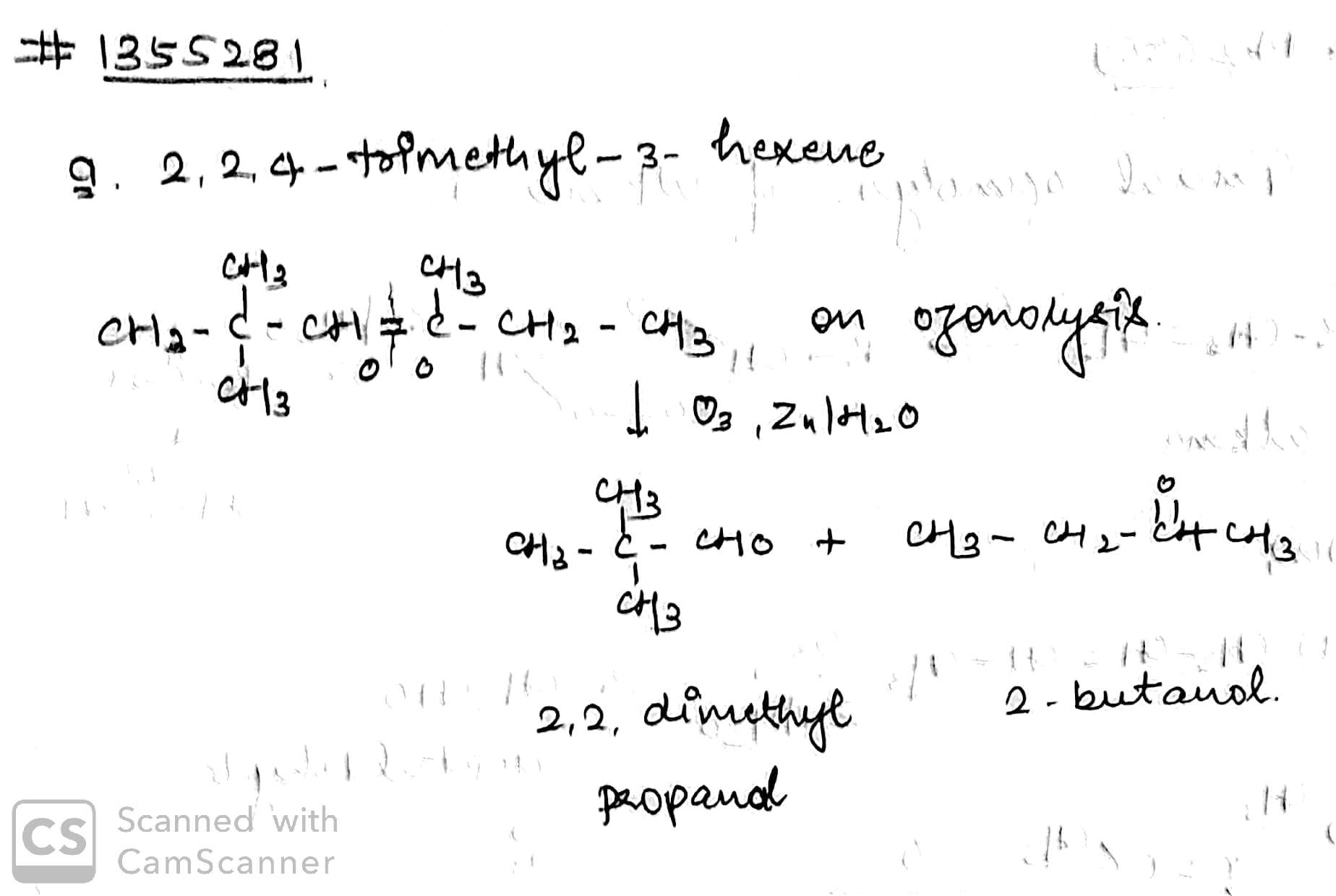Q.1.
Which of the following compound is not suitable to obtain from wurtz reaction?
-
0%
Ethane
-
0%
Butane
-
100%
Isobutane
-
0%
Hexane
Q.2.
Which of the following reactants will yield ethane ?
-
0%
Methyl bromide and sodium
-
0%
Ethyl bromide and magnesium
-
0%
Ethanol and $$H_2SO_4$$
-
0%
Ethyl bromide and KCN
Q.3.
$$H_3C-C\equiv C-CH_3$$ maximum number of linear atoms in given compound is:
-
0%
4
-
0%
6
-
0%
10
-
0%
8
Q.4.
Which of the following reactions would give isopropyl benzene as the major product?
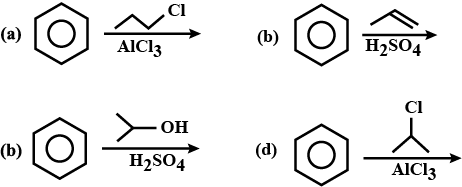

-
0%
a, d
-
0%
b, c
-
0%
b, c, d
-
0%
All of these
Q.5.
Arrange the following compounds in increasing order of their reactivity with sodium hydroxide solution:
[o-nitrochlorobenzene, chlorobenzene, benzyl chloride]
-
0%
$$benzylchloride$$ < $$chlorobenzene$$ < $$o-nitrochlorobenezene$$
-
0%
$$chlorobenzene$$ < $$o-nitrochlorobenzene$$ < $$benzyl chloride$$
-
0%
$$chlorobenzene$$ < $$benzyl chloride$$ < $$o-nitrochlorobenzene$$
-
0%
$$benzyl chloride$$ < $$o-nitrochlorobenzene$$ < $$chlorobenzene$$
Q.6.
The least reactive alkene towards dil. $$HCl$$ is :
-
0%
-
100%
$$CH_3-CH = CH_2$$
-
0%
-
0%
$$CH_2 = CH_2$$
Q.7.
Nitration of which of the following compound is difficult?
-
0%
Benzene
-
0%
Nitrobenzene
-
0%
Toluene
-
0%
Phenol
Q.8.
Alkanes having odd carbons cannot be prepared in?
A) Wurtz reaction
B) Frankland reaction
C) Kolbe's electrolysis
D) Sabatier-sendersen reaction
A) Wurtz reaction
B) Frankland reaction
C) Kolbe's electrolysis
D) Sabatier-sendersen reaction
-
0%
B,C&D
-
0%
A, B & D
-
0%
A, C & D
-
100%
A, B & C
Q.9.
Arrange the following compounds in the descending order of their boiling points
b) isopentane
c) neopentane
a) n-pentane
b) isopentane
c) neopentane
-
100%
$$c>b>a$$
-
0%
$$a>b>c$$
-
0%
$$b>c>a$$
-
0%
$$c>a>b$$
Q.10.
In the following sequence of reaction
$$Toluene\xrightarrow [ ]{ KMn{ O }_{ 4 } } A\xrightarrow [ ]{ { SOCl }_{ 2 } } B\xrightarrow [ BaS{ O }_{ 4 } ]{ { H }_{ 2 }/Pd } C$$
the product $$C$$ is:
$$Toluene\xrightarrow [ ]{ KMn{ O }_{ 4 } } A\xrightarrow [ ]{ { SOCl }_{ 2 } } B\xrightarrow [ BaS{ O }_{ 4 } ]{ { H }_{ 2 }/Pd } C$$
the product $$C$$ is:
-
0%
$${ C }_{ 6 }{ H }_{ 5 }COOH$$
-
0%
$$C_{6}H_{5}CH_{3}$$
-
0%
$${ C }_{ 6 }H_{5}{ CH }_{ 2 }OH$$
-
0%
$$C_{6}H_{5}CHO$$
Q.11.
2-Bromopentane is heated with $$EtO^-Na^+$$ in ethanol. The major product obtained is:
-
0%
2-ethoxypentane.
-
0%
pent-1-ene.
-
0%
isobutane.
-
0%
pent-2-ene.
Q.12.
The number of $${ sp }^{ 2 }$$ - s sigma bonds in benzene are :
-
0%
3
-
100%
6
-
0%
12
-
0%
None of these
Q.13.
Which of the following will allow free rotation about double bond?
[arrows indicate the bond to be considered]
-
0%
-
0%
-
0%
-
0%
Q.14.
Which of the following molecules has a triple bond?
-
0%
$${CH}_{4}$$
-
0%
$${C}_{2}{H}_{4}$$
-
0%
$${C}_{2}{H}_{2}$$
-
100%
$${O}_{3}$$
Q.15.
The reaction of $$P_4$$ with aqueous NaOH gives
-
0%
$$P(OH)_3$$
-
0%
$$P_2O_5$$
-
0%
$$P(OH)_5$$
-
0%
$$PH_3$$
Q.16.
$$4.3\ gm$$ of an alkane is burnt in sufficient oxygen. The $${ CO }_{ 2 }$$ formed reacts completely with $$300\ ml, 2N NaOH$$ solution producing $${ Na }_{ 2 }{ CO }_{ 3 }$$. The alkane should be
-
0%
$${ C }_{ 3 }{ H }_{ 8 }$$
-
0%
$${ C }_{ 12 }{ H }_{ 26 }$$
-
0%
$${ C }_{ 6 }{ H }_{ 14 }$$
-
0%
$${ C }_{ 2 }{ H }_{ 6 }$$
Q.17.
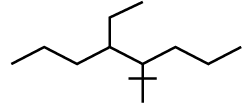
-
0%
$$4-(1,1-dimethylethyl)-5-ethyloctane$$
-
0%
$$5-ethyl -4-(1,1-dimethylethyl) octane$$
-
100%
$$5-(1,1-dimethylethyl)-4-ethyloctane$$
-
0%
$$4-ethyl-5-(1,1-dimethylethyl) octane$$
Q.18.
Ethylene is formed by dehydration of:
-
0%
$$CH_3CHO$$
-
0%
$$C_2H_5OH$$
-
0%
Propyl alcohol
-
0%
Ethyl acetate
Q.19.
Identify product.


-
100%
$$C_2H_2+2CO_2$$
-
0%
$$2KOH+H_2$$
-
0%
$$2KOH+2CO_2$$
-
0%
$$C_2H_2+H_2$$
Q.20.
Which of the following is aromatic in nature
-
0%
-
0%
-
0%
-
0%
$$All \ of \ these$$
Q.21.
The number of $$sp^2-s$$ sigma bonds is benzene are:
-
0%
3
-
0%
6
-
0%
12
-
0%
none of these
Q.22.
For synthesis of 1 -butene, $$CH_3MgI$$ should be treated with :
-
0%
propene
-
0%
2 - chloropropene
-
0%
allyl chloride
-
0%
ethyl chloride
Q.23.
$$CH_{3}-C\equiv C-CH_{3}\xrightarrow[Pd+BaSO_{4}]{H_{2}}P\overset{KMnO_{4}/H^{+}}{\rightarrow}Q.$$. here the product Q is
-
0%
Alkane
-
0%
Alkene
-
0%
Aldehyde
-
0%
Carboxylic acid
Q.24.
Double bond equivalent (degree of unsaturation) of $$(A) $$ is:


-
0%
1
-
0%
2
-
0%
3
-
0%
4
Q.25.
$${ CH }_{ 2 }-CH={ CH }_{ 2 }\xrightarrow { { zn,CH }_{ 3 }OH } product\\ |\quad \quad \quad \quad \quad \quad |\\ Br\quad \quad \quad \quad \quad Br$$
The remaining product is ?
The remaining product is ?
-
0%
-
0%
$${ CH }_{ 2 }=C=C={ CH }_{ 2 }$$
-
0%
$${ CH }_{ 2 }=CH=CH={ CH }_{ 2 }$$
-
0%
Q.26.
Which are the correct IUPAC name of the following compound ?

-
0%
5-butyl-4-is isopropyldecane
-
0%
5-ethyl-4-propyldecane
-
0%
5-sec-butyl-4-isopropyldecane
-
0%
4-(1-methylethyl)-5-(1-methylpropyl)decane
Q.27.
The number of possible alkynes with molecular formula $$C_{5}H_{8}$$ is
-
0%
$$3$$
-
0%
$$4$$
-
0%
$$5$$
-
0%
$$6$$
Q.28.
1, 1 -dibromoethane when heated with zine dust produces_____.
-
0%
ethyl bromide
-
0%
ethene
-
0%
vinyl bromide
-
0%
2 - butene
Q.29.
If two moles of isopropyl chloride reacts with $$Na$$ in presence of dry ether. Which alkane is formed?
-
0%
Hexane
-
0%
2, 3-Dimethyl butane
-
0%
Isopentane
-
0%
Neopentane
Q.30.
IUPAC name of the given compound is:
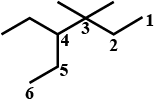

-
0%
2-Methyl-2, 3-diethyl pentane
-
0%
4-Ethyl-3, 3-dimethyl hexane
-
0%
3,4-Diethyl-4-methyl pentane
-
0%
3-Ethyl-4, 4-dimethyl hexane
Q.31.
The correct IUPAC name of the following alkane is
$$H_3C-CH_2-CH_2-CH_2-CH_2-CH_2-CH_2-CH_3$$
$$H_3C-CH_2-CH_2-CH_2-CH_2-CH_2-CH_2-CH_3$$
-
0%
1,6-dimethylhexane
-
0%
Octane
-
0%
Heptane
-
0%
Decane
Q.32.
What is the Possible number of alkadienes with molecular formula $$C_5H_8$$? (Excluding stereoisomers)
-
0%
4
-
0%
5
-
0%
6
-
0%
2
Q.33.
Ethanol reacts with $$CH_3Mgl$$ gives
-
0%
Ethane
-
0%
Isoproply alcohol
-
0%
Acetaldehyde
-
0%
Methane
Q.34.
Reaction of $$trans-2-phenyl -1-bromocyclopentane$$ on reaction with alcoholic $$KOH$$ produces (major):
-
0%
$$4-phenylcyclopentene$$
-
0%
$$2-phenylcyclopentene$$
-
0%
$$1-phenylcyclopentene$$
-
0%
$$3-phenylcyclopentene$$
Q.35.
An alkane containing atleast_____ carbon atoms is converted into an aromatic hydrocarbon, when heated in presence of $$Cr_{2}O_{3}$$ on $$Al_{2}O_{3}$$
-
0%
$$6$$
-
0%
$$4$$
-
0%
$$3$$
-
0%
$$5$$
Q.36.
The major product (A) is


-
0%
-
0%
-
0%
-
0%
Q.37.
The given pair is an example of:

-
0%
Enantiomers
-
0%
Diasteremers
-
0%
Identical
-
0%
Constitutional isomers
Q.38.
Electrolysis of aq. solution of sodium salt of saturated dicarboxylic acids, give
-
0%
alkyne
-
0%
alkene
-
0%
alkane
-
0%
none of these
Q.39.
In the reaction
$$H-C\equiv CH\dfrac { { NaNH }_{ 2 }/liq.{ NH }_{ 3 } }{ { CH }_{ 3 }{ CH }_{ 2 }Br } X\dfrac { { NaNH }_{ 2 }/liq.{ NH }_{ 3 } }{ { CH }_{ 3 }{ CH }_{ 2 }Br } Y$$ $$X$$ and $$Y$$ are
$$H-C\equiv CH\dfrac { { NaNH }_{ 2 }/liq.{ NH }_{ 3 } }{ { CH }_{ 3 }{ CH }_{ 2 }Br } X\dfrac { { NaNH }_{ 2 }/liq.{ NH }_{ 3 } }{ { CH }_{ 3 }{ CH }_{ 2 }Br } Y$$ $$X$$ and $$Y$$ are
-
0%
$$X=1-Butyne ; Y=3-Hexyne$$
-
0%
$$X=2-Butyne ; Y=3-Hexyne$$
-
0%
$$X=2-Butyne ; Y=2-Hexyne$$
-
0%
$$X=1-Butyne ; Y=2-Hexyne$$
Q.40.
The IUPAC name of $$(CH_3)_3C-CH=CH_2$$ is?
-
0%
$$2, 2$$-dimethylbut-$$2$$-ene
-
0%
$$2, 2$$-dimenthylpent-$$3$$-ene
-
0%
$$3, 3$$-dimethylbut-$$1$$-ene
-
0%
Hex-$$1$$-ene
Q.41.
How many optical isomers are possible on monochlorination of $$2-$$methyl butane
-
0%
$$2$$
-
0%
$$4$$
-
0%
$$6$$
-
0%
$$8$$
Q.42.
How many cyclic and alkene isomers of $$C_4H_8$$ are possible? ( Excluding stereoisomers)
-
0%
$$3$$
-
0%
$$4$$
-
0%
$$5$$
-
0%
$$6$$
Q.43.
From which one of the following both ethylene and acetylene could be prepared in a single step?
-
0%
$$CH_{3}CH_{2}OH$$
-
0%
$$Br - CH_{2} - CH_{2} - Br$$
-
0%
$$CH_{3}CH_{2}Br$$
-
0%
$$Br - CH = CH_{2}$$
-
0%
$$CH_{3}COOH$$
Q.44.
Identify major product $${{\text{P}}_{\text{3}}}$$:


-
0%
-
0%
-
0%
-
0%
Q.45.
By which of the following reagent butanoic acid is converted into butane
-
0%
Red P / HI
-
0%
NaOH / CaO
-
0%
$${\text{C}}{{\text{H}}_3}{\text{MgBr}}$$
-
0%
Na/ ether
Q.46.
An alkene of molecular formula $$C_{9}H_{18}$$ on ozonolysis gives 2,2-dimethylpropanal and butan-2-one, then the alkene is
-
0%
2,2,4-trimethylhex-3-ene
-
0%
2,2,6-trimethylhex-3-ene
-
0%
2,3,4-trimethylhex-2-ene
-
0%
2,2,4-trimethylhex-2-ene
Q.47.
The correct order for acid strength of compounds $$CH\equiv CH, CH_{3}-C \equiv CH$$ and $$CH_{2} = CH_{2}$$ is as follows:
-
0%
$$CH \equiv CH > CH_{2} = CH_{2} > CH_{3} - C \equiv CH$$
-
0%
$$HC\equiv CH > CH_{3} - C \equiv CH > CH_{2} = CH_{2}$$
-
0%
$$CH_{3} - C \equiv CH > CH_{2} = CH_{2} > HC \equiv CH$$
-
0%
$$CH_{3} - C \equiv CH > CH\equiv CH > CH_{2} = CH_{2}$$
Q.48.
$$n$$ propyl alcohol on reacting with anhydrous alumina at $$623\,K$$ forms
-
0%
Ethane
-
0%
Propene
-
0%
propyne
-
0%
Propane
Q.49.
$${ CH }_{ 3 }{ CH }_{ 2 }{ CH }_{ 3 }\xrightarrow [ ]{ 400-{ 600 }^{ o }C } X+Y$$ $$X$$ and $$Y$$ are
-
0%
ethylene, ethane
-
0%
Hydrogen, ethylene
-
0%
methane, ethylene
-
0%
Hydrogen, methane
Q.50.
Which of the following does not give alkane with $$R-Mg-X.$$
-
0%
$$Ph-OH$$
-
0%
$$C_6H_6$$
-
0%
$$CH_3COOH$$
-
0%
$$HCl$$
